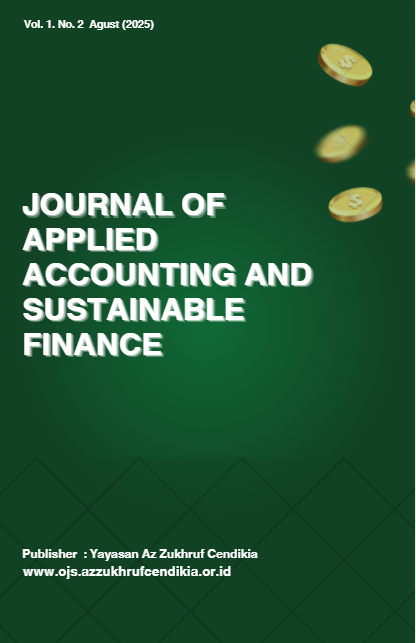Predictive Analysis of VAT Revenue in 2025: The Effect of Macroeconomic Factors on VAT Revenue
Keywords:
VAT Revenue, Exchange Rate, Inflation, Economic GrowthAbstract
Purpose: The purpose of this study is to analyze the influence of macroeconomic factors—namely the rupiah exchange rate, inflation rate, and economic growth—on Value Added Tax (VAT) revenue in Indonesia. Additionally, the research aims to predict VAT revenue for 2025 using a regression-based Machine Learning algorithm and to analyze these predictions in the context of the planned VAT rate increase to 12%.
Design/methodology/approach : This study employs a quantitative approach using secondary time-series data from 2017 to 2024, sourced from Statistics Indonesia (BPS), Bank Indonesia, and the Ministry of Finance. The dependent variable is VAT revenue, while the independent variables include the rupiah exchange rate, inflation, and economic growth. The analysis began with classical assumption tests and multiple linear regression. Subsequently, predictive modeling was conducted using the KNIME platform, testing several Machine Learning algorithms—including linear regression (with and without lag variables), Gradient Boosting, and Random Forest—to find the most accurate model.
Findings : Statistical test results show that the rupiah exchange rate, inflation, and economic growth have no significant effect on VAT revenue, neither individually nor simultaneously. The linear regression, lag-variable, and Gradient Boosting models performed inadequately, showing low explanatory power (low R 2 ). In contrast, the Random Forest model proved superior with an R 2 of 0.844, significantly explaining the data's variability. Based on this model, VAT revenue in 2025 is predicted to follow a gradual upward trend throughout the quarters. An initial dip in revenue is analyzed as a consequence of global geopolitical instability and a domestic political transition impacting consumer purchasing power.
Research limitations/implications: The main limitation of this study is the relatively short time span of the data, which prevents the full capture of long-term trends. The implication is that simple linear models are insufficient for predicting VAT revenue, making complex models like Random Forest more relevant for fiscal policy analysis. Future research is recommended to expand the analysis period and incorporate other variables, such as taxpayer compliance rates and broader global economic conditions.
















